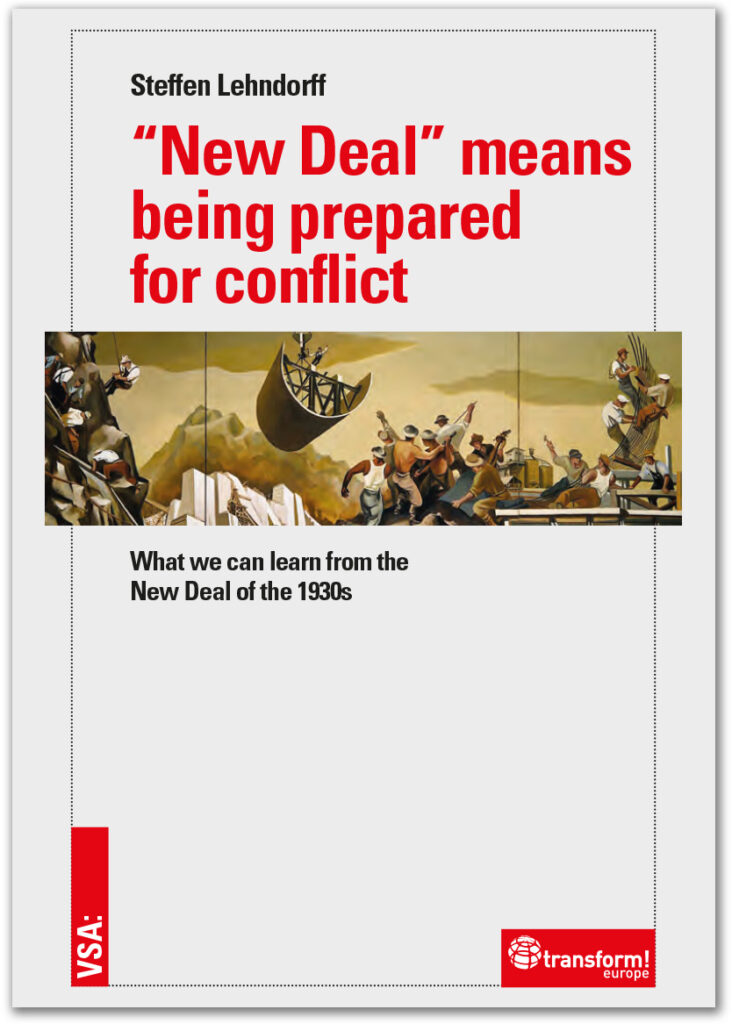Coping with the consequences of the Corona crisis makes a socio-ecological transformation even more urgent. A look back at the New Deal of the 1930s is useful as inspiration for this. Not just at what was done, but primarily at how it was set in motion – by the economist Steffen Lehndorff, supported by transform! europe.
The New Deal policy of the Roosevelt administration was an unprecedented socio-political reform project. The “New Deal” is therefore often used as a slogan, an advertising banner, but it is good for more. Looking at the interplay between government and social actors, their willingness to tread new ground, their ability to learn and their courage to challenge powerful interest groups in business, politics and the media is stimulating for all those who are thinking about how a radical turn towards climate protection can be implemented today.
Steffen Lehndorff
“New Deal” means being prepared for conflict.
What we can learn from the New Deal of the 1930s.
96 pages | VSA: Verlag Hamburg
Translated from the German by Andrew Wilson
ISBN 978-3-96488-092-5
Find the eBook for download on the website of the VSA Verlag.
A hardcopy of the book can be ordered at the website of the VSA Verlag (English and German).
Table of Contents
Introduction
1 “The only light in the darkness”
2 “Above all, try something”
3 “Go out and make me do it”
“Grassroots democracy”
“The Act was absolutely unenforceable without a strong surge of public opinion behind it”
“The President wants you to join a Union”
4 Roosevelt “declined the rich the compliment of fearing them”
5 “All right, we are two nations”
6 “Far too much precious time has passed”
